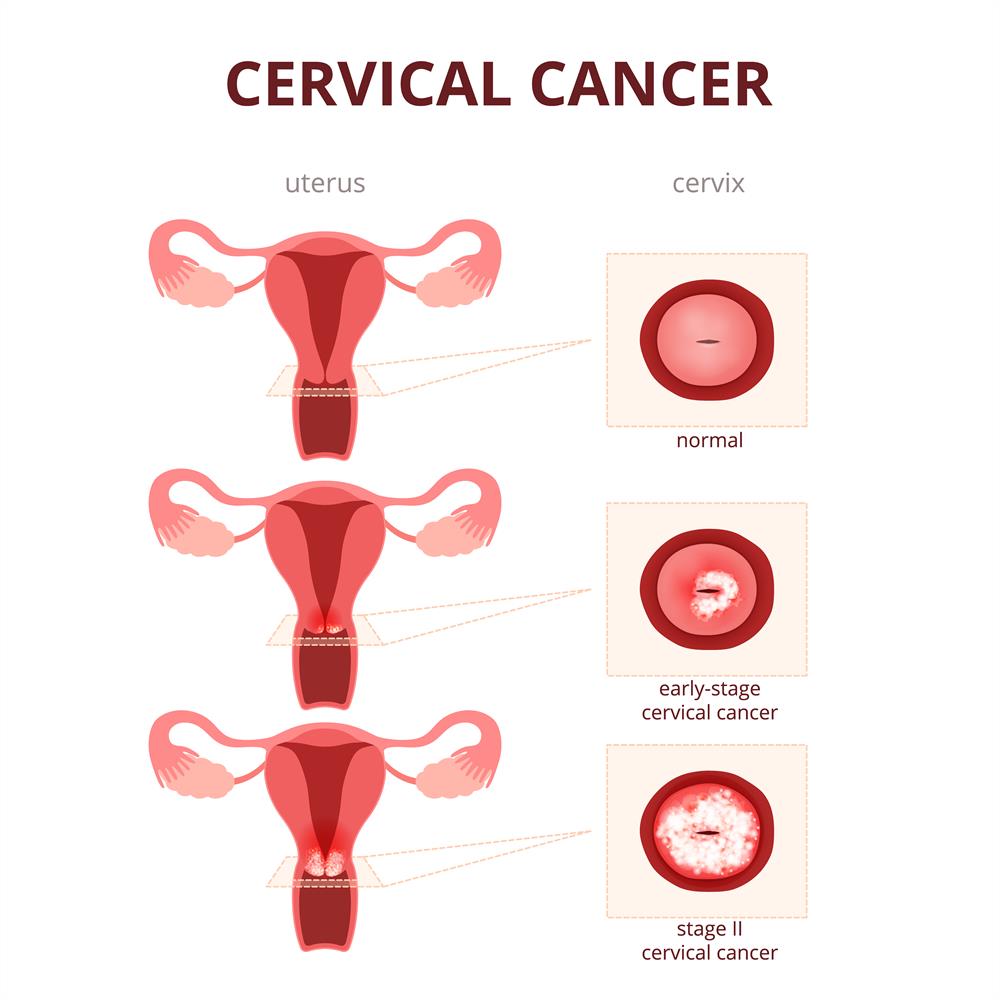

According to National Institute of Cancer Prevention and Research (NICPR), Cervical Cancer is the second most common cancer type in the woman of India, accounting for around 22.86% of all cancer types in women. So, to minimize this percentage, on time diagnosis is very important. If the cervical cancer is detected at its initial stage, it will be easy to treat it. This statement is proved correct by the below stats of life expectancy of each stage.
Stage 1: 80%-93%
Stage 2: 58%-63%
Stage 3: 32%-35%
Stage 4: 15%-16%
Therefore, doctors first try to confirm things like is there any metastatic state (whether it has spread nearby organs), what procedure/ treatment will be best for that particular state, what further tests are required.
Concerning the aforementioned, doctors may conduct a number of Diagnosis test to confirm the stage and type of disease. Now, the question comes that how the doctor will decide the best detection/ diagnostic test for you. For this, the doctor will look into the answers of following questions.
- What is the current medical health and past medical history of the patient?
- Which all symptoms is the patient experiencing?
- When did these symptoms start to occur in the patient body?
- What are the age and current medical status of the patient?
- What does the earlier test report say?
These are some of the questions whose answers will be searched by the doctors. According to this, the advanced and specific test will be conducted, so that the disease can be diagnosed. On the basis of these reports, the doctor will pick the best-suited treatment method. So, read about all the highly responsive cervical cancer diagnostic test and treatment methods.
Cervical Cancer Diagnosis
Other than the physical test, there are few other tests too which help in diagnosing cervix cancer.
Pap Test: To conduct a Pap test, a gentle scraping is done on the outside of the cervix and vagina to get a sample for testing. This sample is tested in the laboratory to check the changes which have taken place in the cell. According to these changes in the cells, the doctors judge whether it will lead to cervix cancer or not.
Pelvic Examination: Most of the doctors prefer to have the pelvic examination and Pap test at the same time as through pelvic examination, they can check out all the unusual changes taking place in uterus, cervix, bladder, rectum, vagina, ovaries.
HPV DNA Test: The method of HPV DNA Test is quite similar to that of Pap Test. A sample of cells is taken from the patient’s cervix to check the presence of various HPV strains in the body. Two of the most common strains of HPV which are found in the patient’s body are HPV-16 and HPV-18.
Pelvic Examination under Anesthesia: Pelvic Examination under Anesthesia is useful when the doctor wants to check the spreading of cancerous cells from the cervix to other nearby organs like the vagina, uterus, rectum.
Colposcopy: Colposcopy is one of the most preferred diagnostic methods for cervix cancer. Through Colposcopy, you can have a closer look of the cervix (the opening of the vagina). This will be a helpful method of treatment in checking the infections and health of the cervix. Also, this is a painless treatment. It is suggested to avoid undergoing Colposcopy during the periods.
Biopsy: In Biopsy, a sample tissue is taken out from the infected area. This tissue is checked under the microscope to determine the level of disease. A biopsy is also helpful in checking whether cancer has reached its metastatic state or not. The various types of Biopsy methods which a doctor can choose are:
Punch Biopsy: In Punch Biopsy, a sharp tool is used to pinch off the infected tissue for cervix for further tests.
Endocervical Curettage: In Endocervical curettage, an instrument Curette (small spoon-shaped instrument) or a thin brush is used to scrape a sample tissue of the cervix.
Cone Biopsy: Cone Biopsy is used to check the status of deeper sections of the cervix tissue after giving general anesthesia to the body.
Electrical Wire Loop: In the electric wire loop method, a thin and low voltage bulb is taken to take a sample of the cervix tissue.
X-Ray: A small radiation is used to generate the images of internal organs of the body. Intravenous Urography, a type of X-ray is used to view the kidney and bladder.
CT Scan: CT Scan is used for the 3D view of the infected areas. The result through computed tomography is achieved by taking multiple x-rays from different angles which are combined with the help of a computer.
Magnetic Resonance Imaging (MRI): As x-rays are taken with the help of radiation which can harm the body, so, instead of this, MRI is used. In this magnetic waves are used to create the image of a tumour from different angles.
Cystoscopy: A thin and lighted tube called cystoscope is inserted into the body through the urethra. This is used to check whether cancer influenced the bladder or not.
Proctoscopy: A thin, lighted and flexible tube is inserted in the rectum to check the spreading of cancer cells in the rectum.
Cervical Cancer Treatment Options
There are several methods which are available for the treatment of Cervical cancer. The type of treatment depends on the stage, body type, and medical history of the patient. The various treatment options which are available for cervical cancer are:
Surgery
Surgery is most responsive at the initial stage of cervical cancer. As at the initial stage, the uterus (hysterectomy) can be removed through surgery which also helps in preventing the future recurrence. There are two types of surgery options:
- Simple Hysterectomy: This method is used by the doctors when cervical cancer in its very early stage. In the simple hysterectomy, only the cervix and uterus are removed.
- Radical Hysterectomy: In Radical Hysterectomy, the cervix, vagina, affected lymph node, and a part of the vagina is removed to eliminate the danger of Cervix cancer.
Note that after these surgery methods, it is almost impossible to become pregnant.
Radiation Therapy
Through radiation therapy, the doctors use high-intensity x-rays to destroy the cancer cells. Radiation Therapy is used when the doctors want to shrink a tumor or when they want to destroy a tumor (before surgery). For better results, many times doctors go for radiation therapy along with chemotherapy.
Chemotherapy
Chemotherapy is a method of treatment in which the drugs/ medicines are injected into the body through veins to kill the cancer cells. At the advanced level of Cervix Cancer, both chemotherapy and radiation therapy are used together. Chemotherapy has proved to be an effective treatment for cervix cancer, but there are a lot of side effects too. This is because of the chemo drugs as they harm the healthy cells.
So, if you are facing any of the Cervical Cancer symptoms, then immediately go doctor’s consultancy. You can also fill out the contact form for an expert’s advice. For the better understanding of cervical cancer, read about the cervical cancer causes/ risk factors and their prevention methods.
Leave a reply




Leave a reply